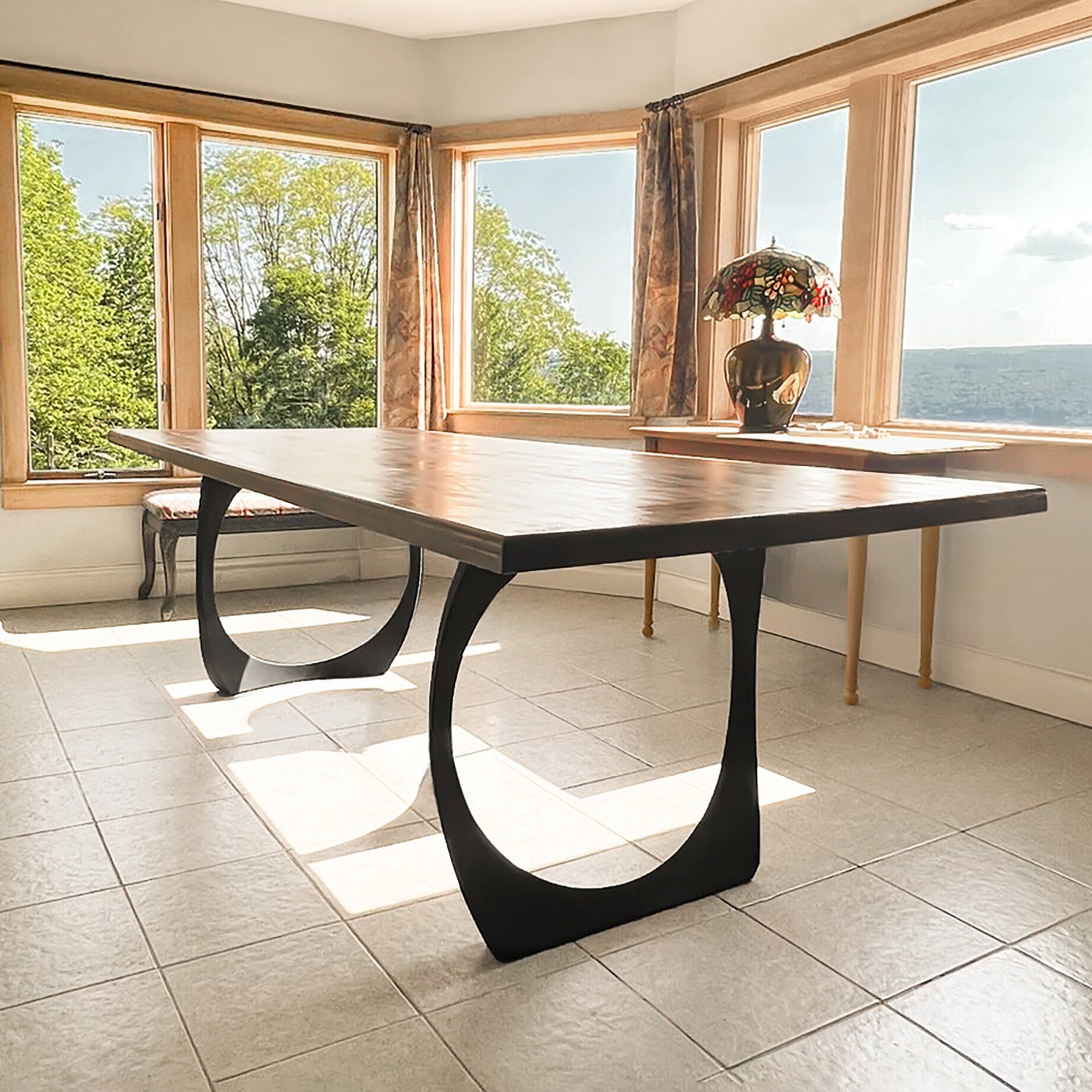Leading Trends in Dining Room Table Legs to Boost Your Eating Space
Leading Trends in Dining Room Table Legs to Boost Your Eating Space
Blog Article
A Detailed Look at Eating Table Leg Styles: Locating the Suitable Suit
Selecting the appropriate table leg design is essential for both aesthetic appeal and practical capability. Traditional 4 legs provide ageless style and security, while the pedestal base gives enhanced legroom and a contemporary look. For those with larger tables, trestle legs ensure tough support, whereas hairpin legs present a mid-century contemporary ambiance with their minimalist layout. The x-shaped legs mix modern style with boosted stability. Each of these options brings distinct advantages, making the selection a lot more than simply a matter of choice. Explore even more to uncover which design completely complements your eating room and way of life.
Typical Four Legs
Amongst the numerous types of eating table leg designs, the standard four-leg design remains a classic selection for numerous households. Four legs supply balanced support, making sure the table stays secure and qualified of bearing significant weight (dining room table legs).
From a visual point of view, the traditional four-leg style can be quickly adapted to different indoor styles. Whether crafted from wood, metal, or a combination of products, these legs can be intricately carved, smooth and minimalistic, or anything in between. Their flexibility permits them to enhance both rustic and modern settings perfectly.
In addition, the straightforward structure of the four-leg design helps with ease of motion and placement within a room. Unlike more complex bases, this style minimizes obstructions, giving adequate legroom for diners. In recap, the conventional four-leg table leg style marries sustaining elegance with functional capability, making it an astute option for those looking for both kind and function in their eating furnishings.
Pedestal Base
Often celebrated for its sophisticated and space-efficient layout, the pedestal base is a notable choice to the conventional four-leg configuration in table leg styles. This distinct base normally includes a single central column sustaining the tabletop, which can differ in type, from ornately sculpted timber to sleek, modern-day metal. Among the key benefits of the stand base is its capacity to take full advantage of legroom and seating adaptability. Without edge legs, diners are managed greater liberty of activity, making it a suitable choice for round and oval tables that advertise more intimate and inclusive events.
The main column itself provides a canvas for detailed designs and imaginative expressions, adding an aspect of aesthetic interest beneath the table. In summary, the pedestal base combines functionality with style, making it a fine-tuned and useful alternative for varied eating atmospheres.
Trestle Legs
Trestle legs provide a durable and timeless foundation for dining tables, characterized by their straight cross-bracing and strong assistance light beams. Originating from medieval times, this style has actually developed yet preserved its important structure, making it a seasonal favorite in both standard and modern settings. The main trestle light beam, commonly supported by two or more vertical articles, uses outstanding stability, enabling bigger table sizes without the need for extra legs.
A significant benefit of trestle leg tables is the enough legroom they use. Unlike tables with four corner legs, the absence of obstructions at the table's sides gives unobstructed space for chairs and restaurants, improving comfort and availability. This makes trestle tables excellent for accommodating larger celebrations, whether in a dining space or a banquet hall.
The aesthetic versatility of trestle legs is noteworthy. Readily available in a selection of products such as timber, steel, and composite, they can be finished to match a large range of interior designs. From rustic farmhouse to smooth modern-day designs, trestle legs can be customized to suit individual tastes. Their long-lasting allure and functional benefits make trestle legs a compelling choice for those looking for why not try here both style and functionality in their dining table.
Hairpin Legs

The allure of barrette legs exists in their simplicity and versatility - dining room table legs. Readily available in a variety of materials, consisting of steel visit this page and brass, they can be ended up in countless shades to match different indoor designs. Whether coupled with a rustic wood look at more info table top or a modern glass surface, hairpin legs easily mix performance with a touch of vintage charm
Resilience is another noteworthy attribute of barrette legs. In spite of their delicate look, these legs are crafted to bear considerable weight, ensuring the table remains secure and protected. Furthermore, they are relatively very easy to set up, making them a preferred selection for DIY lovers and expert furnishings manufacturers alike.
X-Shaped Legs

Created from products such as steel, wood, or a combination of both, X-shaped legs can be tailored to match numerous layout preferences. Steel legs frequently provide a streamlined and commercial feel, ideal for loft-style apartment or condos and contemporary dining areas. On the various other hand, wood X-shaped legs supply a warmer, extra rustic allure, suitable for farmhouse or eclectic interiors. The versatility in materials allows house owners to customize their eating tables to much better fit their overall design plan.
Furthermore, the design behind X-shaped legs makes sure also weight distribution, lessening the risk of tottering and enhancing durability. This makes them specifically appropriate for bigger eating tables that require added support. Fundamentally, X-shaped legs mix useful engineering with contemporary appearances, making them an ageless selection for varied eating environments.
Final Thought
An extensive understanding of dining table leg designs exposes the distinct characteristics and advantages of each layout. Trestle legs make certain durable assistance for bigger tables, and barrette legs present a mid-century contemporary visual.
Report this page